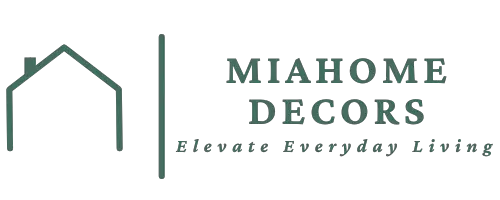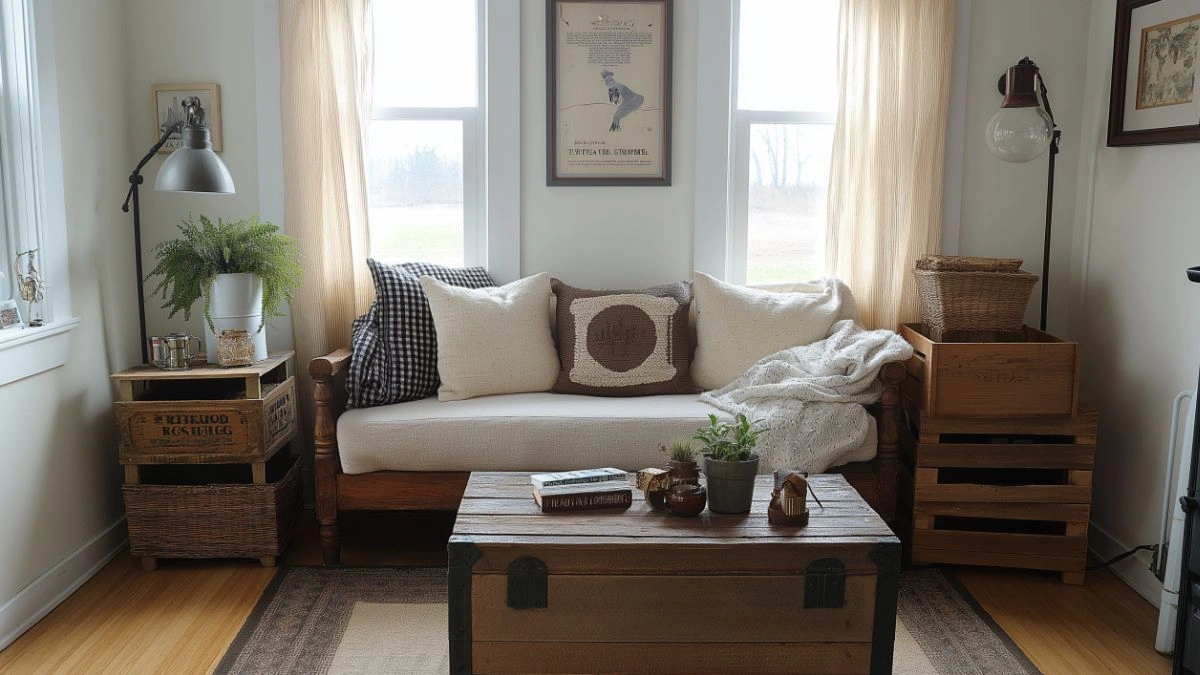Budget-Friendly Great Room Furniture Layout Hacks
Table of Contents
Creating a beautifully functional great room doesn’t have to mean hiring an interior designer or investing in all-new furniture. With a few clever layout strategies and a touch of creativity, you can transform your living space into a cozy, stylish, and highly functional area—without overspending. According to a recent study by Houzz, over 70% of homeowners cited better furniture arrangement as the easiest way to improve a room’s functionality.
The great room, often the heart of the home, presents both exciting opportunities and tricky challenges. It’s meant to bring people together—serving as a space for lounging, entertaining, working, and relaxing. But because it’s typically large and open-concept, furnishing it efficiently on a budget can feel overwhelming.
This guide will walk you through a series of budget-friendly furniture layout hacks designed to make the most of your great room. Whether you’re working with hand-me-downs, thrift store finds, or pieces you already love, you’ll discover how to reconfigure your space for maximum style and flow. We’ll cover zone creation, dual-purpose pieces, visual anchors, and more—so you can love your layout, no matter the size of your wallet.
Define Zones with Rugs and Furniture Placement
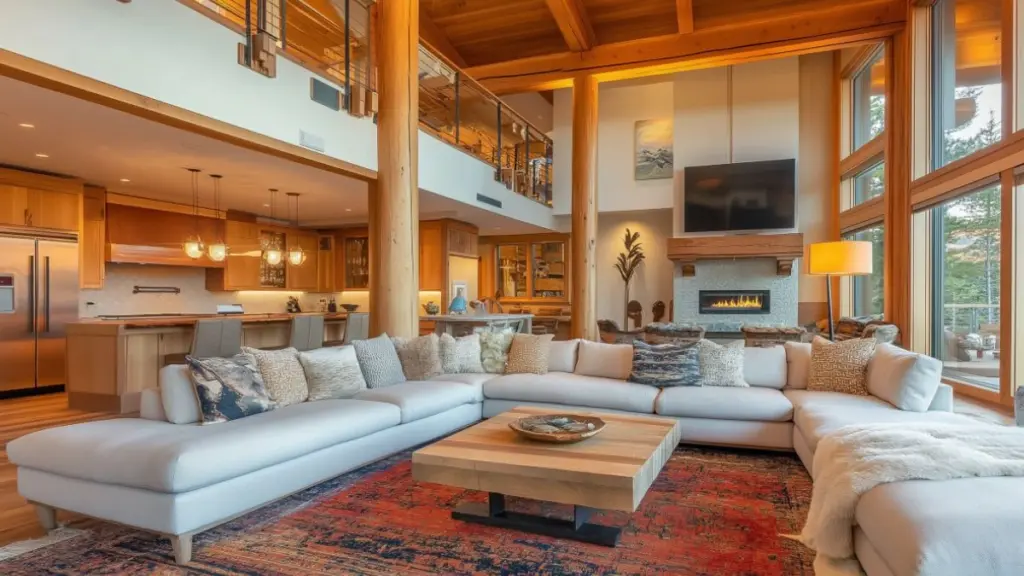
One of the most effective ways to organize an open-concept great room is by creating distinct zones using rugs and strategic furniture placement. Zoning breaks the room into visually digestible sections—like conversation areas, reading corners, or dining nooks—making the space feel intentional and inviting.
Instead of walls, use area rugs to anchor each space. For instance, place a medium-sized rug under your main seating area and use the back of a sofa to separate the living zone from the rest of the room. Rugs instantly add warmth and are widely available in budget ranges.
Zoning Hacks
| Zone Type | Key Furniture or Feature |
|---|---|
| Lounge Area | Sofa + rug + coffee table |
| Reading Corner | Chair + floor lamp + small bookshelf |
| Dining Space | Table + low-profile divider or console |
| Workstation | Desk behind sofa or under a window |
Use Furniture You Already Own in New Ways
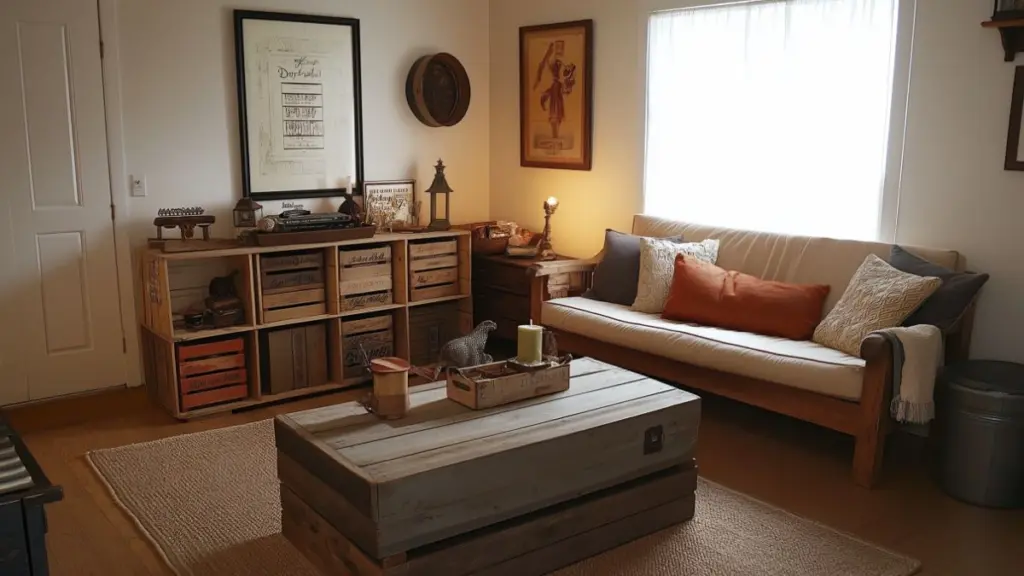
Before spending money on new furniture, take inventory of what you already have. You’d be surprised how easily a bedroom bench can become a coffee table, or how a console table can be repurposed as a narrow desk or bar cart.
Start by rearranging major pieces to open up pathways and improve flow. Consider placing your TV off-center or mounting it on a wall to free up floor space. Try “floating” your sofa (not pushed against a wall) to define an area. Repurpose small furniture pieces creatively—for example, stack vintage crates as end tables or use an ottoman with a tray for a coffee table.
Repurposing Ideas
| Item | New Function |
|---|---|
| Dresser | TV stand or entry console |
| Bookshelf | Room divider or vertical bar area |
| Ottoman | Coffee table with tray |
| Side Table | Bedside, hallway accent, or reading nook base |
Anchor the Layout with a Budget-Friendly Focal Point
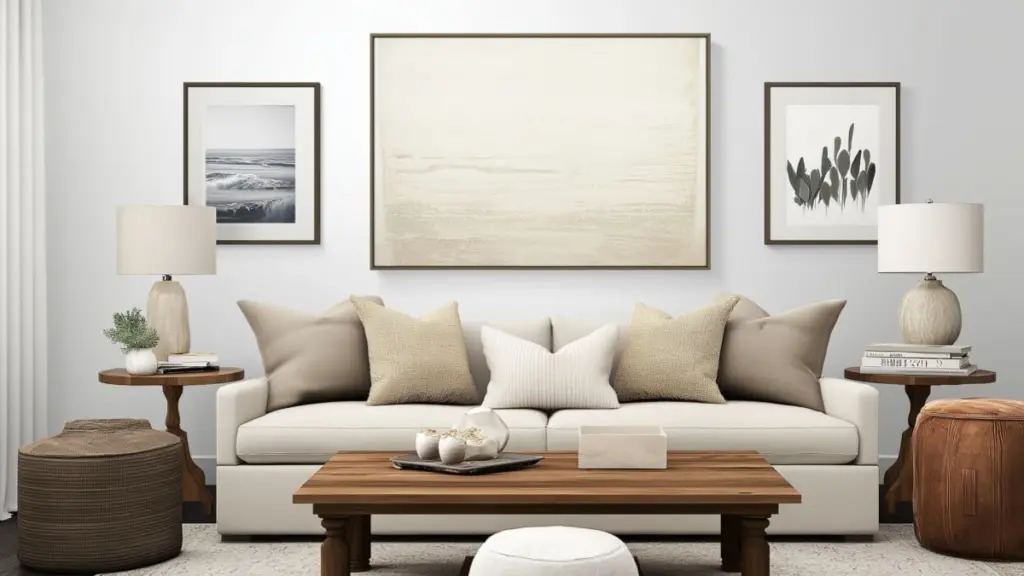
Every great room needs a focal point to bring harmony to the layout. While fireplaces and windows often serve that purpose, you can easily create your own on a budget.
A gallery wall behind your sofa, an oversized thrifted mirror, or a large-scale DIY canvas can all provide visual impact. Arrange your furniture to face or align with this focal feature—it gives the room direction and creates a natural gathering point.
You can also DIY built-in looks with floating shelves or stacked bookcases on either side of a TV stand or blank wall. These vertical elements pull the eye upward and help balance vaulted ceilings or wide wall space.
Focal Point Ideas
| Feature | Budget-Friendly Method |
|---|---|
| Gallery Wall | Use mismatched thrifted frames + printable art |
| Statement Mirror | Thrifted or painted with DIY distressing |
| Faux Built-Ins | Bookcases + trim, or painted back panel |
| Bold Accent Wall | Peel-and-stick wallpaper or contrast paint |
Choose Multi-Functional Furniture Pieces
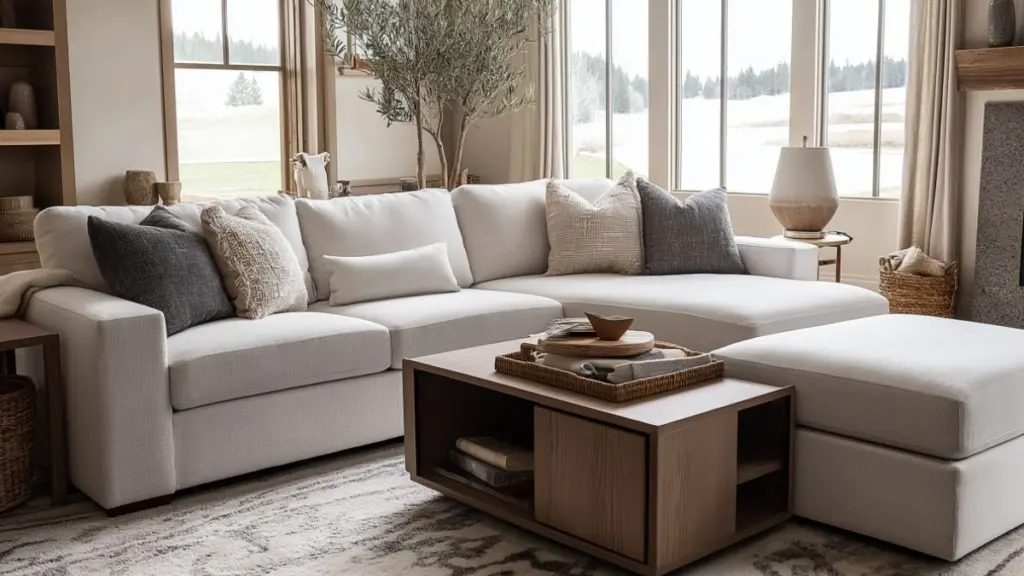
When budget is tight, every piece of furniture should work harder. Multi-functional furniture not only saves space but maximizes your investment. Look for sofas with hidden storage, nesting tables, fold-out desks, and ottomans that open for hidden organization.
Sectionals with reversible chaises give layout flexibility. A coffee table with lift-top storage can double as a work surface. Console tables behind the sofa can serve as both workspace and serving area. Choose lightweight accent chairs that can be moved easily between conversation areas or pulled into the dining zone.
This strategy is especially useful for renters or those in small homes, where every square foot counts. By doubling the functionality of each item, you gain comfort and versatility without extra cost.
Multi-Use Furniture Checklist
| Item | Functions |
|---|---|
| Lift-Top Coffee Table | Coffee table + work station + hidden storage |
| Ottoman with Storage | Seating + blanket bin + tray table |
| Nesting Tables | Separate or stack for side or coffee tables |
| Console Table | Workspace, bar, or room divider |
Create Balance with Symmetry and Flow
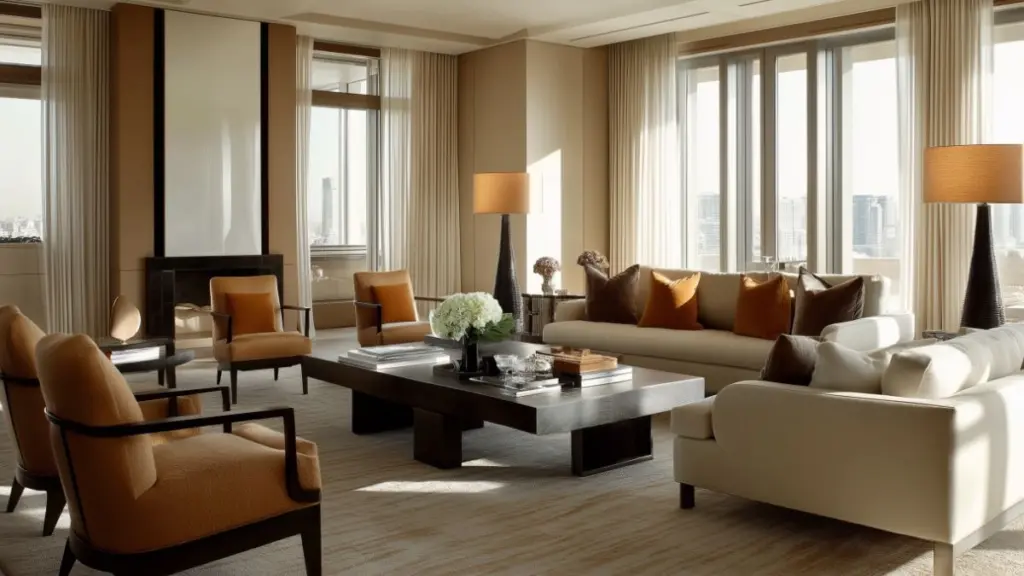
A well-arranged room isn’t just about what goes where—it’s about how the elements relate. In a great room, symmetry and flow can make even the most eclectic or secondhand furnishings feel intentional and polished.
Use pairs when possible—like matching lamps on either side of a sofa or twin chairs flanking a coffee table. This visually balances the space, especially in wide rooms. For asymmetrical layouts, counterbalance large pieces (like a sectional) with tall elements (like a plant or floor lamp) on the opposite side.
Flow refers to how easily you can move through the room. Avoid blocking natural walkways, and leave 2–3 feet between seating and tables for comfort. If your space is long and narrow, float the furniture in the center and leave space along the edges for movement.
Symmetry and Flow Layout Tips
| Challenge | Solution |
|---|---|
| Unbalanced Furniture | Add mirror-image items or tall accents |
| Tight Pathways | Slide seating inward, use fewer but flexible pieces |
| Long, Narrow Room | Float central seating, define zones with rugs |
| Awkward Corners | Add plants or compact storage to fill negative space |
Refresh with Budget Décor for Instant Personality
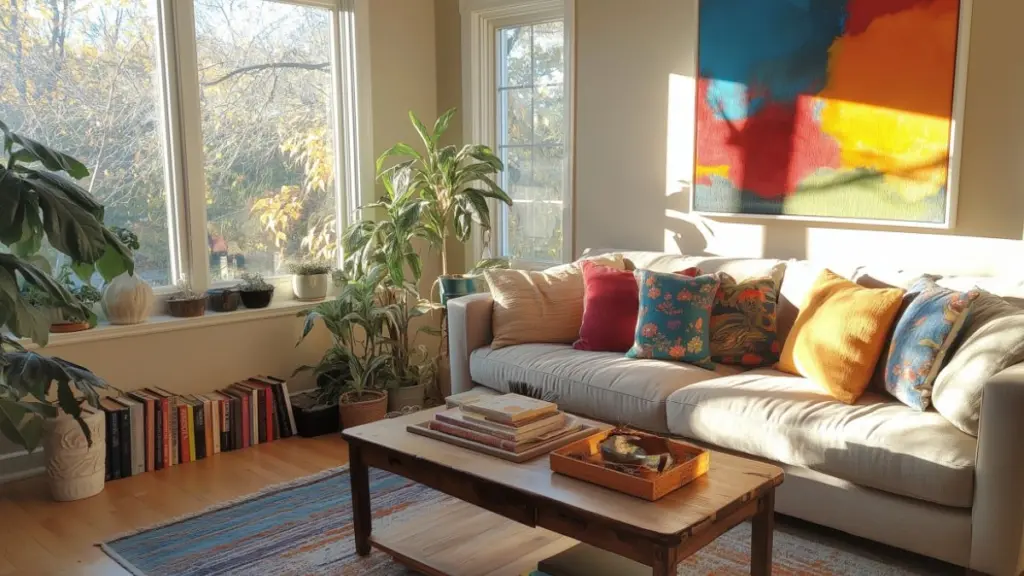
You don’t need new furniture to make your great room feel fresh. Swapping out or DIYing accessories like throw pillows, blankets, and wall art is a low-cost way to give your layout a seasonal or style-specific update.
Use budget-friendly tricks like pillow covers instead of new pillows, spray-painted vases from the thrift store, or upcycled baskets for wall décor. Rearranging books and objects you already own with intention—grouped by color, height, or texture—can create new focal points and energy in the room.
If you’re crafty, make your own abstract wall art with dollar-store canvases and leftover paint. Or build a DIY blanket ladder to store throws stylishly.
Budget Décor Refresh Ideas
| Item | Budget-Friendly Tip |
|---|---|
| Throw Pillows | Buy inserts once, rotate seasonal covers |
| Wall Art | DIY paint, printables, or framed fabric |
| Coffee Table Styling | Stack thrifted books + small bowl or candle |
| Blanket Storage | DIY ladder, crate, or large woven basket |
Conclusion
Designing a great room that feels welcoming and stylish doesn’t require a big budget—it just requires intention, creativity, and a willingness to work with what you have. From zone-defining rugs to multifunctional furniture and statement focal points, these layout hacks prove that thoughtful arrangement and budget-friendly choices can deliver high-impact results.
Whether you’re rearranging inherited pieces, styling thrifted finds, or crafting your own décor, the key is to embrace flexibility and focus on flow. With these practical ideas, your great room can reflect your personal style and serve your everyday needs—while staying beautifully affordable.
